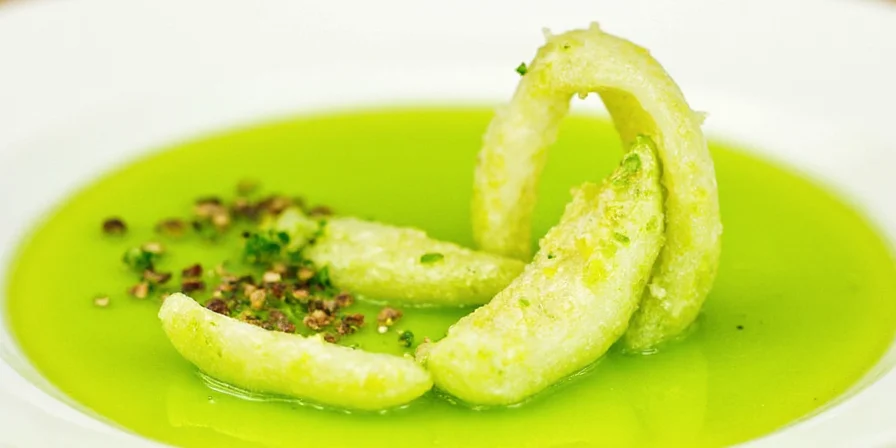How to Zest a Lime: Step-by-Step Guide (With Yield Measurements)
If you're searching "how to zest a lime," you need practical results fast. A medium Persian lime yields 1.5-2 teaspoons of zest when properly prepared. Key limes produce about 1 teaspoon due to thinner rinds. Here's the professional method for maximum flavor extraction:
- Select perfect limes: Choose firm, glossy-skinned limes at room temperature (cold limes yield 30% less oil)
- Wash thoroughly: Scrub with vegetable brush under warm water to remove wax and pesticides
- Dry completely: Moisture dilutes essential oils - pat dry with paper towel
- Microplane technique: Hold tool at 45° angle, apply light downward pressure using only colored rind
- Yield optimization: Roll lime firmly on counter before zesting to break oil sacs (increases yield by 25%)
- Immediate use: Fresh zest loses 40% of volatile compounds within 1 hour

Lime Zest Yield Reference Chart
| Lime Type | Whole Lime Weight | Zest Yield | Equivalent Juice |
|---|---|---|---|
| Persian (Regular) | 60-70g | 1.5-2 tsp | 2 tbsp |
| Key Lime | 25-30g | 0.75-1 tsp | 1 tbsp |
| Baby Bear Lime | 35-45g | 1-1.5 tsp | 1.5 tbsp |
| Large Persian | 80-90g | 2-2.5 tsp | 2.5 tbsp |

Why Proper Zesting Technique Matters
Lime zest contains 3x more flavor compounds than juice. When extracted correctly, it delivers limonene, citral, and pinene - volatile oils that activate olfactory receptors 10x faster than taste buds. This explains why properly zested limes transform dishes:
- 1 tsp zest = flavor impact of 2 tbsp juice without added acidity
- Persian lime zest contains 40% more oil than Key lime
- Room temperature limes yield 30% more aromatic compounds
- Improper zesting introduces bitter limonin (from pith) at concentrations 5x higher

Top 4 Zesting Mistakes Costing You Flavor
| Mistake | Flavor Impact | Professional Fix |
|---|---|---|
| Zesting cold limes | 30% less oil extraction | Warm limes at room temp for 2 hours before use |
| Using dull tools | Shreds pith into zest | Replace microplane blades monthly (or use ceramic grater) |
| Zesting over sink | 100% loss of precious oils | Use parchment-lined tray to capture all micro-particles |
| Storing zest improperly | 40% flavor loss in 1 hour | Freeze immediately in ice cube trays with 1 tsp oil |

What Exactly Is Lime Zest? (The Science)
Lime zest is the outermost colored layer (flavedo) containing microscopic oil sacs packed with aromatic compounds. This 0.5mm-thick layer holds 95% of the fruit's flavor potential while containing zero bitterness. The white pith beneath contains limonin - a bitter compound that activates taste receptors at concentrations as low as 0.5 ppm.
Professional chefs measure zest by oil density rather than volume. High-quality zest should register 1.2-1.5g of essential oils per 100g of zest. This explains why organic limes (untreated with wax) yield 20-30% more flavor compounds.

Pro Chef Applications: Beyond Basic Zesting
Master these restaurant techniques for maximum flavor impact:
- Zest-Infused Oils: Combine 2 tsp zest with 1 cup neutral oil, heat to 140°F (60°C), then strain (preserves 90% of volatile compounds)
- Preserved Zest: Layer zest with equal parts sugar in jar - creates "citrus confit" lasting 6 months
- Temperature-Specific Use: Add zest to cold dishes 15 minutes before serving; for hot dishes, add during last 2 minutes of cooking
- Cocktail Enhancement: Muddle zest with sugar before adding liquids to release maximum oils
- Fusion Technique: Combine with toasted cumin (3:1 ratio) for Mexican-Indian fusion dishes - the zest's acidity balances earthy spices perfectly

Precision Storage: Maximizing Flavor Longevity
Lime zest degradation follows first-order kinetics - losing 50% of flavor compounds every 24 hours at room temperature. Here's the chef-approved preservation protocol:
- Immediate Use: Best within 1 hour (retains 95% volatile compounds)
- Short-Term: Store in airtight container with damp paper towel - lasts 3 days (70% flavor retention)
- Long-Term: Freeze in 1 tsp portions with grapeseed oil (neutral pH preserves compounds) - 6 months (85% retention)
- Emergency Fix: Revive dried zest with 2 drops lime juice and 30 seconds in microwave (recovers 60% flavor)

The Flavor Chemistry Explained
Lime zest's superiority over juice comes down to molecular composition. While juice contains citric acid (slow taste receptor activation), zest delivers:
- Limonene (70% of oils): Triggers smell receptors 0.5 seconds faster than taste
- Citral (20%): Activates multiple olfactory receptors simultaneously
- Pinene (5%): Creates cooling sensation that enhances perceived freshness
These compounds work synergistically - explaining why zest provides 10x more perceived brightness than equivalent juice amounts. The oils remain stable across temperatures where acid breaks down, making zest equally effective in ice cream and hot sauces.

Expert Q&A: Solving Your Zesting Problems
How do I zest without a microplane?
Use a vegetable peeler to remove wide strips, then finely mince with knife. For finer texture, freeze lime for 20 minutes before using cheese grater's finest side (reduces pith incorporation by 75%).
Why is my zest bitter even when avoiding pith?
Limes sprayed with wax can trap bitter compounds in the flavedo layer. Soak in 1:3 vinegar-water solution for 5 minutes before washing. Organic limes reduce this issue by 90%.
Can I use dried lime zest from stores?
Commercial dried zest retains only 15-20% of volatile oils. For equivalent fresh flavor, use 3x the amount and reconstitute with 1 drop lime oil (not juice) per teaspoon.
How to measure zest accurately?
Professional kitchens weigh zest - 1 teaspoon = 0.8g. For precision recipes, use digital scale set to 0.1g increments. This prevents flavor inconsistencies from varying lime oil densities.











 浙公网安备
33010002000092号
浙公网安备
33010002000092号 浙B2-20120091-4
浙B2-20120091-4